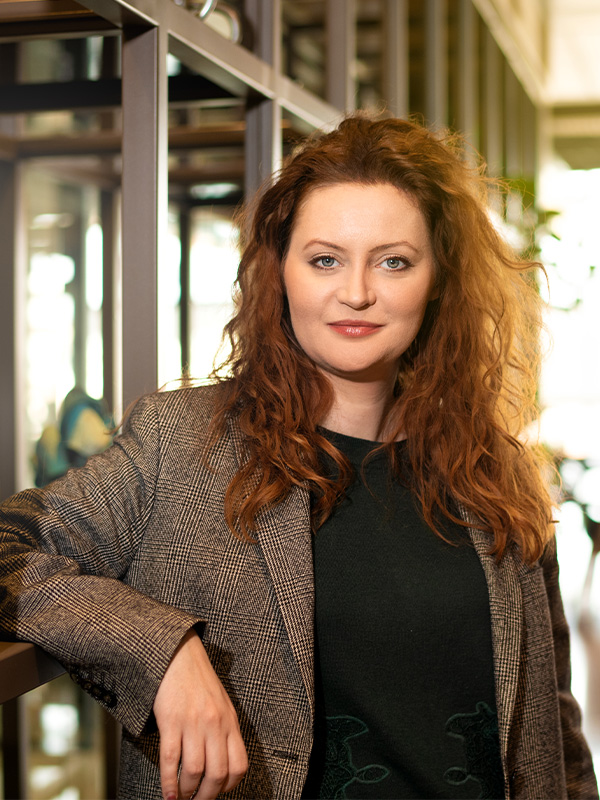“Meer dan 98% van onze kandidaten blijft onze nieuwsbrief lezen. Schrijf je in en geef jouw carrière een boost.”
Marlies Hoogvliet - Partner


1. Don’t build a product, build an industry
Catawiki is the leading online marketplace for special objects that fulfill people’s passions, offering more than 75,000 objects for auction every week. Its mission is to create a world where every special object is just a click away.
In many markets, such platforms for trading pre-owned items were really a totally new phenomenon just a few years ago. From the experience of successfully growing platforms like these, Janet draws a fundamental insight.
“The growth of this type of product is about creating the category as much as building the product. It means you design products to change consumer behavior and create new habits. In Brazil, with OLX, we built a business like that from scratch. People said secondhand would never work there, yet we built the biggest marketplace for consumer-to-consumer trade with over 70 million monthly users, and we redefined accessible e-commerce.”
What Janet learned as General Manager and later Product Executive for consumer marketplaces is how to go beyond optimizing the slice, which is your business, and actually making the whole pie (the category and the industry) bigger.
“We are doing something similar at Catawiki, in an industry that is not very democratic or accessible. You have to skim a lot of fairs, small shops or galleries to find that special edition comic book or discover the perfect piece of art or vintage watch. The digitization of that process has made a very strong, positive impact and introduced a much larger audience to the special objects category. What you see is that with the right big-picture mindset and the right technology, you can really create a successful product, shape consumer behavior and define the category you operate in. That’s what I mean when I say:
‘Don’t build a product, build an industry.’
If you have that mindset, it changes how you define your business, your target market, and what success looks like.”
2021 – heden: Vice President of Product, Catawi
2021 – Heden: Co-Founder, Kvisp
2020-2021: Director Global Trust & Customer Experience, Ebay
2015-2020: Chief Product Officer, OLX Brasil
2014-2015: Product Director, OLX Brasil
2009-2014: Country Manager ECommerce Portfolio, Allegro Group
2008-2009: Founder, Virtual Media Group
2007-2008: Marketing Manager, Safecharge
2003-2007: Operations Manager, FSO

2. Intentionally shape the culture you need
Within the organization, that holistic view of building an industry translates into a focus on building the right culture. A culture with an emphasis on insights into customer needs and behaviors, and teams with a strong drive to deliver impact.
“In my career, my main focus has been on building high-performing, high-impact product teams and a product organization with a strong customer- and results-oriented culture. This became almost a personal mission. How do you build a strong culture and anchor it in the organization? I see way too many organizations leaving culture as a nice-to-have goal for the HR team and missing an opportunity to shape it intentionally.”
“Build artifacts that form behaviors, those behaviors form beliefs, and those beliefs then shape the culture.”
“For example, at Catawiki, we intentionally talk about speed and impact and translate this into our ways of working, decision-making practice, the way we run a/b-tests, the type of people we hire, how we onboard for impact, the framework we use to set goals and measure progress.”
“All of those are intentional choices we made. We even have a name for it – Catawiki 3.0 – which became an artifact on its own and a daily reminder for everyone of the type of culture we want.”
3. Be more than just the facilitator
What is the role of the Product Manager? “For us, the focus now is on two things: speed and impact. There is a lot of theory that paints the role of the product manager merely as a facilitator between engineering, design, business, etcetera. Many people just operate on that level, but the role of the Product Manager involves more. You’re also an influencer, a promoter, and a commander sometimes. You’re expected to have an opinion, shape, and lead with a vision. You’re responsible for making decisions and taking ownership of outcomes.”
“So as Product Management, we see the need to go beyond just being a facilitator. To take more risk. How do you create the culture to get smart people to do that? That starts with awareness: a clear picture of what the role entails. That’s also embedded in how we designed our competency framework, with decisiveness, impact, and speed as key components.”
4. Strengthen your storytelling skills
According to Janet, “communication and strategic storytelling are also very important to get ahead in your career in product management. It’s half the job. I often see this being undervalued, but everything we do is ultimately just sales and marketing. Selling a pain point to a team, making them fall in love with a problem, and making them want to solve it.
So how you communicate – in person, in writing, via e-mail, or in a Town Hall – is really key. Start learning and practicing as early as possible. It’s very difficult to be successful in this role without learning how to communicate effectively, and build and narrate an inspiring story.”
5. Simplify complexity
“Some of the best people I’ve worked with are exceptionally good at simplifying complexity. Cutting through the data noise, working their way through a fuzzy problem or ill-defined goal, seeing what the actual problem is, and finding a viable path to solving it.”
“Complexity in business is also growing, speed of technological change, regulation environment, the interest of multiple stakeholders, impossible trade-offs – simplifying all that and steering teams with clarity is the superpower of a great Product Manager.”
6. Train your AI muscles
Over the past few years and on to the coming ones, Janet sees one important change playing out in the world of product management.
“Every Product Manager is now an AI Product Manager.”
“That’s definitely a new muscle we all need to train. How do I work with research scientists and machine learning engineers? What are the right questions for doing a product review where the core functionality of your product is the model? What is the product development lifecycle of AI products? And most importantly, how do we maintain a customer-centric focus and make sure we build to solve a meaningful human problem and not for the sake of technology or sophisticated new capability.”
